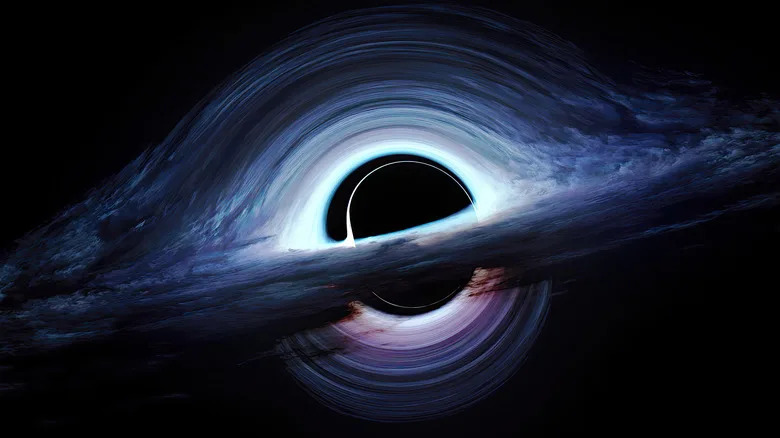A crew of astronomers has found a supermassive black gap that’s 100 million instances the mass of the solar. This spectacular discovery was discovered utilizing the highly effective James Webb House Telescope’s (JWST) infrared eye. The analysis crew believes this black gap existed throughout cosmic midday, a time period used to seek advice from the time interval 4 billion years after the Large Bang — of which there’s now a brand new mannequin to attempt to clarify the origins of the universe.
The JWST has helped to find what are known as little purple dots. They’re factors of sunshine from the early cosmos that are not absolutely understood. Given the sheer dimension of this supermassive black gap, the researchers have referred to it because the BiRD, or Large Purple Dot.
This discovery was printed within the Astronomy & Astrophysics journal in October 2025 underneath the title “A giant purple dot at cosmic midday”. This research introduced collectively a world crew of researchers from such organizations as House Telescope Science Institute for the European House Company, Yale College, and the College of Cambridge. Their findings might assist to raised perceive the character of the purple dots the JWST is discovering, and to broaden our information of the early cosmos.
Learn extra: What Does House Really Scent Like? This is What Scientists Say
What have we discovered about this supermassive black gap?
The James Webb House Telescope essential mirror – BEST-BACKGROUNDS/Shutterstock
Researchers utilizing the James Webb House Telescope have uncovered these little purple dots that present indicators of large black holes hundreds of thousands of instances the Solar’s mass — and supermassive black holes are surprisingly frequent — however these purple dots barely emit X-rays or radio waves, which could be very uncommon. To grasp them higher, astronomers at the moment are learning examples at completely different distances within the universe which incorporates this supermassive black gap BiRD. It existed throughout cosmic midday, a time of quick progress for each galaxies and black holes.
To grasp what is going on on contained in the newly discovered BiRD, the analysis crew analyzed its mild intimately. They broke the sunshine into completely different parts, resembling mild coming from fast-moving fuel near the black gap versus mild from slow-moving fuel additional out. They then seemed for each emission and absorption options. Their evaluation prompt very dense, turbulent materials near the black gap.
As a result of the BiRD has comparable properties to the little purple dots, the researchers used overlapping options to estimate how shiny it’s. They calculated that the article’s whole power output was typical for a rising black gap of this dimension. Nevertheless, after they checked X-ray and radio knowledge, the article was virtually invisible. This implies that these purple dots behave very in another way from what is anticipated and opens up a brand new line of analysis for the long run.
What future analysis may very well be accomplished relating to black holes
creative picture of a supermassive black gap – Blackdovfx/Getty Photos
One potential clarification for the faint X-ray signature is that an especially thick cloud of fuel is hiding the core of the supermassive black gap. One other idea is that it may be consuming up matter so shortly it types a thick, puffy disk that blocks or cools the area the place X-rays often kind. Future analysis must deal with the habits of the BiRD and different purple dots to raised perceive what’s displaying up on the JWST.
The analysis crew has plans for deeper observations throughout a number of wavelengths. In addition they hope to look bigger areas of the sky for extra examples just like the BiRD, which can make it simpler to pin down how uncommon these objects actually are. For now, this supermassive black gap stays a little bit of a thriller and an intriguing discover.
Understanding the BiRD and black holes generally can additional our information of our galaxy’s personal black gap. Don’t be concerned, although, our photo voltaic system should not fall into it. Black holes proceed to fascinate astronomers and the general public generally, and we will sit up for the long run when the JWST helps us discover out extra in regards to the BiRD and different black holes prefer it.
Loved this text? Signal as much as BGR’s free publication and add us as a most popular search supply for the most recent in tech and leisure, plus suggestions and recommendation you may truly use.
Learn the unique article on BGR.


